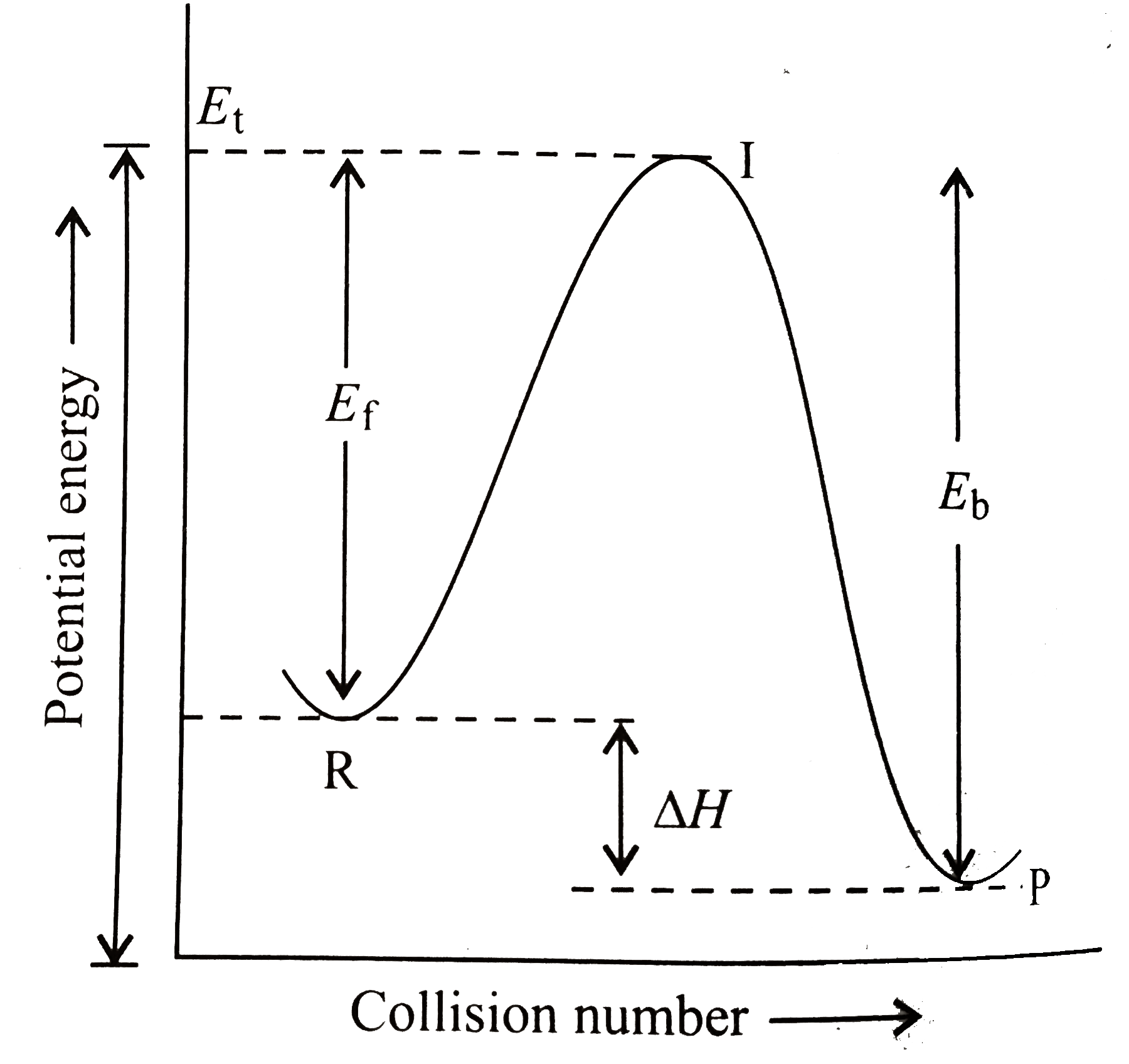The temprature dependence of rate constant in a reaction is given by k = Ae−2600T the activation energy is :
15.48 kJ/mol
21.62 kJ/mol
35.82 kJ/mol
42.63 kJ/mol
To find the activation energy from the given temperature dependence of the rate constant, we can follow these steps:
1. Identify the Given Equation:
The equation provided for the rate constant k is:
k=Ae−2600T
where A is the Arrhenius constant and T is the temperature in Kelvin.
2. Compare with the Arrhenius Equation:
The Arrhenius equation is given by:
k=Ae−EaRT
where Ea is the activation energy, R is the gas constant, and T is the temperature.
3. Equate the Exponents:
By comparing the two equations, we can equate the exponents:
−EaR=−2600T
This leads to:
EaR=2600T
4. Rearranging for Activation Energy:
From the equation above, we can express the activation energy Ea:
Ea=2600⋅R
5. Substituting the Value of R:
The value of the gas constant R is approximately 8.314J/mol⋅K. Therefore:
Ea=2600⋅8.314
6. Calculating Ea:
Now we calculate:
Ea=2600⋅8.314=21614J/mol
7. Convert to Kilojoules:
To convert joules to kilojoules, we divide by 1000:
Ea=216141000=21.614kJ/mol
8. Final Answer:
Rounding to two decimal places, the activation energy Ea is:
Ea≈21.62kJ/mol
Conclusion:
The activation energy for the reaction is 21.62kJ/mol.
The equation provided for the rate constant k is:
k=Ae−2600T
where A is the Arrhenius constant and T is the temperature in Kelvin.
The Arrhenius equation is given by:
k=Ae−EaRT
where Ea is the activation energy, R is the gas constant, and T is the temperature.
By comparing the two equations, we can equate the exponents:
−EaR=−2600T
This leads to:
EaR=2600T
From the equation above, we can express the activation energy Ea:
Ea=2600⋅R
The value of the gas constant R is approximately 8.314J/mol⋅K. Therefore:
Ea=2600⋅8.314
Now we calculate:
Ea=2600⋅8.314=21614J/mol
To convert joules to kilojoules, we divide by 1000:
Ea=216141000=21.614kJ/mol
Rounding to two decimal places, the activation energy Ea is:
Ea≈21.62kJ/mol
The activation energy for the reaction is 21.62kJ/mol.
Topper's Solved these Questions
Similar Questions
Which reaction will have the greater temperature dependence for the rate constant-one with a small value of energy of activation (E) or one with a large value of E?
View SolutionThe temperature dependence of rate constant (k) of a chemical reaction is written in terms of Arrhenius equation, k=Ae−E∗/RT, -Activation energy (E∗) of the reaction can be calculated by plotting
View Solution
Knowledge Check
The temperature dependence of rate constant (k) of a chemical reaction is written in terms of Arrhenius equation, k=Ae−Ea/RT) Activation energy (Ea) of the reaction can be calculate by plotting
Ak Vs TBk Vs 1logTClog k Vs 1TDlog k Vs TThe temperature dependence of rate constant(k) of a chemical reaction is written in terms of Arrenius equation, k=A⋅e−Ea Activation energy (Ea) of the reaction can be calculated by plotting
AkVs1lagTBlogkVs1TClogkVs1logTDkVsTThe temperature dependence of rate constant (k) of a chemical reaction is written in terms of Arrhenius equation, k=Ae−Ea/RT) Activation energy (Ea) of the reaction can be calculate by plotting
Alogkvs1TBlogkvs1logTCkvs.TDkvs1logT
The temperature dependence of rate constant (k) of a chemical reaction is written in terms of Arrhenius equation, k=Ae−E∗/RT, -Activation energy (E∗) of the reaction can be calculated by plotting
View SolutionThe temperature dependence of rate constant (k) of a chemical reaction is written in terms of Arrhenius equation, k=Ae−Ea/RT) Activation energy (Ea) of the reaction can be calculate by plotting
View SolutionThe temperature dependence of rate constant (k) of a chemical reaction is written in terms of Arrhenius equation, k=Ae−Ea/RT) Activation energy (Ea) of the reaction can be calculate by plotting
View SolutionThe dependence of the rate constant for a reaction on temperature is given by the equation k=Ae−EaRT Under what conditions is the rate constant k the smallest?
View SolutionA colliison between reactant molecules must occur with a certain minimum energy before it is effective in yielding Product molecules. This minimum energy is called activation energy Ea Large the value of activation energy, smaller the value of rate constant k. Larger is the value of activation energy, greater is the effect of temperature rise on rate constant k.

Ef= Activation energy of forward reaction
Eb= Activation energy of backward reaction
ΔH=Ef−Eb
Ef= threshold energy
The rate constant of a certain reaction is given by k=Ae−Ea/RT
(where A= Arrhenius constant). Which factor should be lowered so that the rate of reaction may increase?
View Solution
